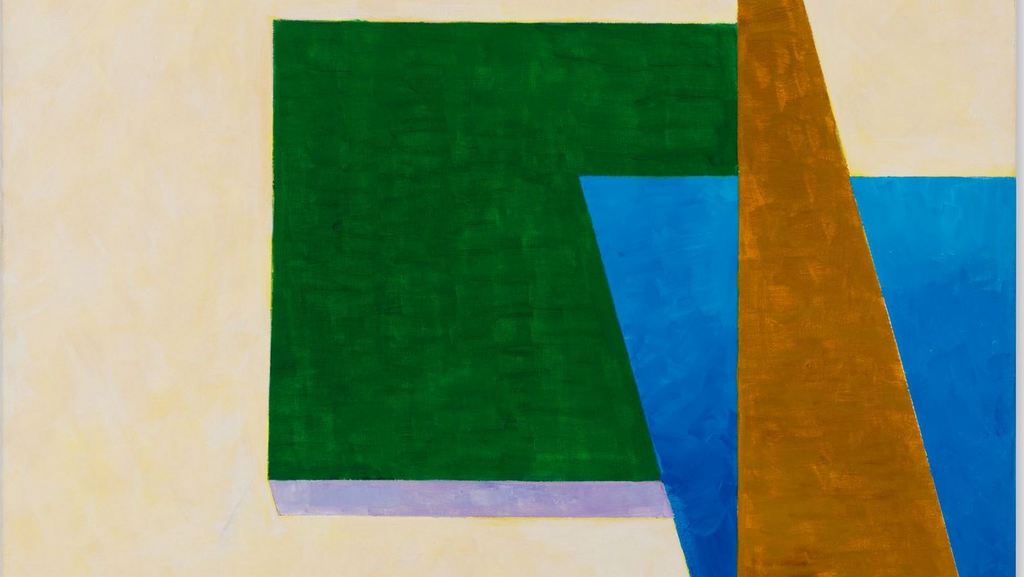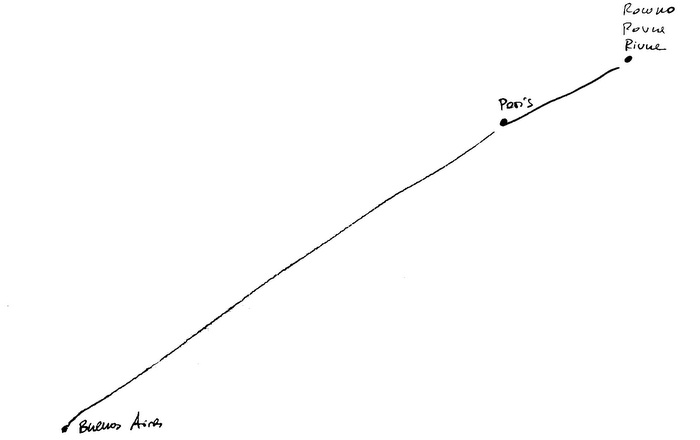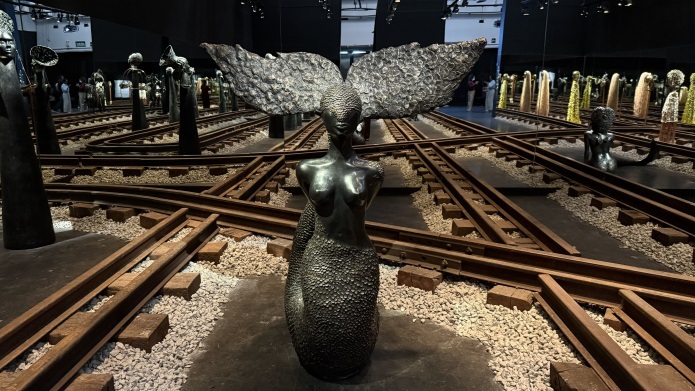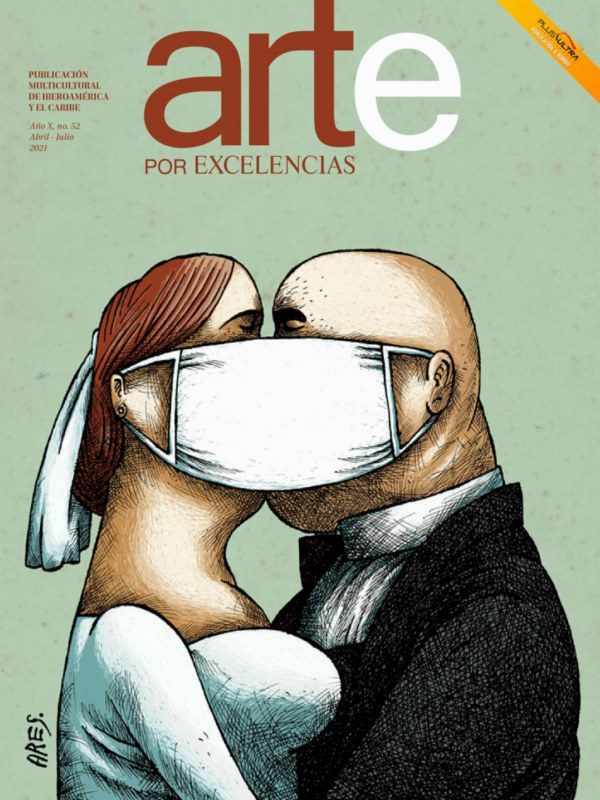Rhona Hoffman Gallery is pleased to present their first solo exhibition of the Egyptian artist Wassef Boutros-Ghali (b. 1924, Cairo, Egypt). Situated as both constructivist compositions and Levantine landscapes, the collection of bold canvases hover between formal geometric abstractions and distilled figural representations of channels, canals, buildings struck by sunlight, and the limitlessness of the desert and the sea.
Two primary facts surrounding the artist's storied biography are often asserted in relation to his paintings. The first is that he was born into a long lineage of statesmen and politicians; his brother (Boutros Boutros-Ghali) orchestrated the Camp David Accords in 1978, his grandfather (Boutros Ghali Pasha) was Egypt's prime minister for just over one year prior to his assassination in 1910. The second is that, though studying in the Beaux-Arts tradition, Boutros-Ghali's affinity toward the style of international modernism following WWII led him to be a self-proclaimed disciple of Le Corbusier. Each of these influences unfold throughout Boutros-Ghali's decades-long career as a painter and an architect. At the time of this exhibition, the artist has lived through three political revolutions in his native Cairo—the impact of this fact upon his work is both remote (paintings that appear in a constant negotiation between push and pull) and tangible (in the artist's availability of materials throughout his chronology).
Amid his work and life—which among being a painter has included roles such as the Principal Technical Advisor to the United Nations Development Program (UNDP) and a consultant for UNESCO to the restoration of ancient monuments in Tunisia, Algeria, and Morocco—the discourse surrounding Boutros-Ghali is intrinsically tied to both politics and the international project of modernism within the context of the Global South. It is the artist's precise interest in the intersection between the built environment, urban planning, political conflict, and the sublimity of the landscape upon which these human histories develop that Boutros-Ghali's paintings evoke.
The project of modernism has been perceived as "a quintessentially European and North-American movement, all other expressions have tended to be dismissed as 'derivative' or 'mimicry'—a syndrome of 'being relegated to the waiting room of history.'" A subsequent, more subtle form of occupation to colonial rule. As a text on Chandigarh, whose masterplan was re-designed by Le Corbusier beginning in the 1950s describes, "...modern urbanism in the Global South remains stuck in the discourses of center and periphery, of the original model and the copy of modernity and tradition." Boutros-Ghali's paintings exist not as a copy, translation, or distortion of this history, but rather evidence an 'alternative modernism' that has pervaded throughout his life and the majority of the regions he occupied while practicing from the 1940s to the present.
Following Boutros-Ghali's return to Cairo in 1985, two paintings in particular from 2002 embody this pictorial and theoretical quality. In Dream (Rêve) (2002), a white square is cradled within the upper center of a square perimeter. Surrounding the interior shape, the span of an ochre kite form pulls down from the top right edge of the canvas, extending behind the majority of the composition. It is interrupted by minimal labyrinthine strips of black and white in the lower left quadrant. Alternating between positive and negative form, the geometry of the work through the economic use of three colors achieves an unpredictable mobility—fighting against inertia, the eye moves along the traces of Boutros-Ghali's structure. At times the work is frontal, like a gateway or a wall; at others, we see an aerial view of a building upon sand, which is demarcated along the depths of a body of water. In either read of the image, the painting carries an inherently diagrammatic quality.
In Oedipus (2002), this figuration extends its schema toward mythology. Titled after the King of Thebes from the Athenian tragedy written by Sophocles, Oedipus' prophecy was told that he would kill his father and marry his mother. Unaware of his adoption, he inadvertently fulfills his fate. In Boutros-Ghali's representation, the bodily elements of the protagonist are similarly secreted, perhaps intentionally misleading the viewer to assume the composition is a pure geometric abstraction. As with the other works on view within the exhibition—which could appear as shadows cast by buildings, or glimpses of the sea—the collection of shapes upon the canvas both dissolve and come into focus. The personification within Oedipus positions a desaturated green figure whose elongated arm reaches from behind a column. A blue triangle—painted in a brilliant ultramarine hue, a pigment once so rare it was reserved to adorn the Virgin Mary in depictions of Christ— rests atop an imposing white curved edge that occupies the space between us and the figure. It approaches his mouth.
Like Boutros-Ghali's Oedipus, the position of the artist in relation to the subjects he portrays is one of both intimacy and abstraction. Of a love for, and opposition within, the construction of the image. They arise from an artist who has witnessed enduring conflict; a record of perception unfettered by colonial attempts to dismiss their origin as evolutions of modernism. Though Boutros-Ghali has lived in many cities out of necessity, this collection of works, each made in his studio in Cairo, are indicative of arriving home.
––Stephanie Cristello
WASSEF BOUTROS-GHALI
June 25 - July 30, 2021
Paintings: 2000-2016















